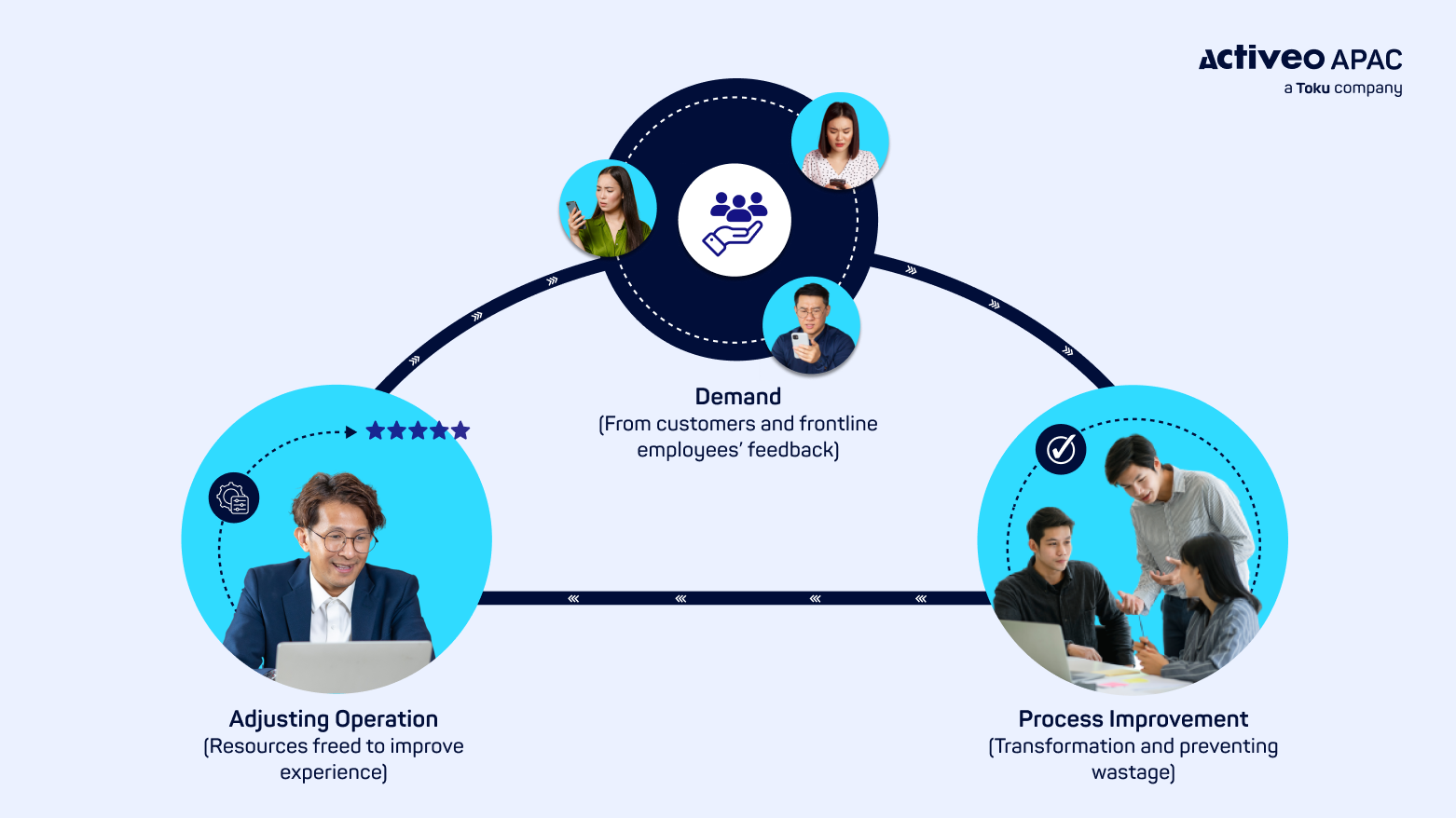Discover how a leading luxury retailer improved operational efficiency and customer satisfaction by partnering with Activeo APAC to implement robust Workforce Management Solutions, driving a successful digital transformation.
The service industry has long thrived on the maxim, ‘The customer is always right.’
But what if the secret to truly exceptional customer service is to question the demand for said service in the first place? Welcome to the increasingly accepted notion of ‘Best Service is No Service,’ a philosophy that zeroes in on perfecting customer experiences to the point where traditional customer service becomes obsolete.
In essence, this philosophy aims to mitigate customer friction by preemptively identifying and resolving issues. This removes the barriers and friction that might otherwise drive a customer to pick up the phone or fire off an angry email.
The customer has less need to reach out for support, which leaves the customer support team in a far better position to serve the needs of customers who genuinely need help.
Why challenge customer demand?

Imagine you’re at an upscale restaurant. The waiter asks, “Is everything all right?” every five minutes. Though meant to provide attentive service, it becomes intrusive. What if instead, the waiter anticipated when you’d need them—your water glass is never empty, and your next course arrives just as you set down your fork?
In order to do this, you must first scrutinise and understand every stage in the customer’s experience. Then, dissect those moments to uncover underlying inefficiencies or bottlenecks. Are there repetitive issues that can be headed off at the pass?
If you dig deep, you often find that many of these ‘needs’ are borne out of inefficiencies and can be eliminated through proactive initiatives.
In our experience, most companies might take some tentative steps to challenge customer demand, but they are rarely joined up in a complete process that empowers them to decide how to adjust their operations accordingly.
This is why challenging customer demand is so vital in the process for continuous improvement.
Eliminating the ‘Dumb Contacts’

You’ve heard the adage, “No question is a dumb question.”
But when it comes to customer service, there are certainly ‘dumb contacts.’
These are interactions that consume resources but don’t necessarily add value to the customer experience or your bottom line. More often than not, they are borne from inefficiencies, ambiguities, or system limitations.
In order to identify and tackle these unnecessary customer interactions, forward-thinking companies are adopting speech analytics.
By using speech analytics, businesses can accurately and automatically quantify customer intents. This data-driven approach cuts through the noise, offering invaluable insights into why customers are reaching out in the first place.
The beauty of speech analytics is in its capacity to evolve this data into actionable intelligence in the form of weekly report dashboards.
With this rich resource at their disposal, CX Managers, business users, and frontline staff can not only identify but also implement targeted solutions to genuinely meet customer needs, obviating the need for future ‘dumb contacts.’
This way, you’re not merely plugging holes in a sinking ship; you’re redesigning the ship so it sails smoothly.
Leveraging self-service to address customer irritants
Consider Sarah, an avid reader and frequent Amazon user.
She’s just received a delivery and eagerly rips open the package, only to find she’s been sent a gardening book instead of the mystery novel she’s been waiting for. Groaning at the thought of an inevitable customer service call—waiting on hold, explaining the issue, and negotiating a solution—she reluctantly opens the Amazon app.
To her surprise, the app intuitively guides her through a streamlined return process.
A series of easy-to-follow prompts asks her to scan the barcode of the wrong item, select a reason for the return, and even offers her a choice between a refund or a replacement. She opts for the refund and is given the option to print a return label directly from her phone or receive one via email. Astonished at the ease of the process, Sarah prints the label, sticks it on the return package, and drops it off at her nearest courier.
Within minutes of the package being scanned at the depot, Sarah receives a notification on her phone: her refund has been initiated.
This is the transformative power of a self-service system.
It’s not merely about reducing the workload on customer service agents, but about elevating the customer experience from start to finish. By creating a mechanism that enables customers to resolve their own issues without hassle, you not only free up your customer service resources but also instill a sense of empowerment and satisfaction in your customer base.
The power of being proactive in your customer experience
In a proactive model, businesses act like a trusted advisor foreseeing problems before they snowball into crises.
A shipping delay? Notify the customer with a new ETA and a discount on their next purchase.
Missed an appointment? Make sure to automate your subsequent communication to include a link to reschedule the appointment.
These proactive gestures build an enduring sense of reliability and trust. They eliminate the need for customers to ask, “What happened?” because they already know—and they’re pleased that you’ve handled it so gracefully.
Make customer service an unseen, yet felt, experience
The ‘Best Service is No Service’ philosophy is a call for businesses to evolve.
We need to think ahead of the curve and anticipate customer needs, tackle inefficiencies, and invest in self-service and proactive models. This isn’t merely a streamlining exercise; it’s a pathway to deeper, more sustainable relationships with our customer base.
Because sometimes, the most effective service is the one that renders itself invisible, creating an environment where customers feel understood without having to ask.
 Rosaline Oh
Rosaline Oh 



 Angie Yeo
Angie Yeo 
 Nora Huin
Nora Huin